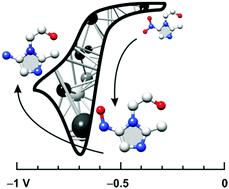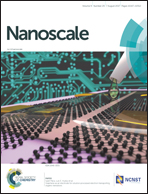A simple high-yield synthesis of high-purity Hägg carbide (χ-Fe5C2) nanoparticles with extraordinary electrochemical properties†
Abstract
Iron carbides are of eminent interest in both fundamental scientific research and in the industry owing to their properties such as excellent mechanical strength and chemical inertness. They have been found very effective in Fischer–Tropsch synthesis exploring heterogeneous catalysis for the production of chemicals such as liquid fuel and they have also been employed as successful promoters for the oxygen reduction reaction (ORR) and hydrogen evolution reaction (HER). However, so far there have been only a few reports on the application of iron carbide nanoparticles in the field of electrochemical sensing. Here, we present a stable form of Hägg carbide nanoparticles synthesized from a rare form of iron(III) oxide (β-Fe2O3). The as-prepared nanomaterial was characterized employing X-ray powder diffraction and Mössbauer spectroscopy to prove its composition as well as an extraordinary high purity level. It turned out that Hägg carbide nanoparticles prepared by thermally treated β-Fe2O3 exhibited excellent electrochemical properties including low charge transfer resistivity (Rct) compared to the other tested materials. Moreover, the Hägg carbide nanoparticles were tested as a promising electrocatalyst for voltammetric detection of the antibiotic metronidazole proving its practical applicability.



 Please wait while we load your content...
Please wait while we load your content...